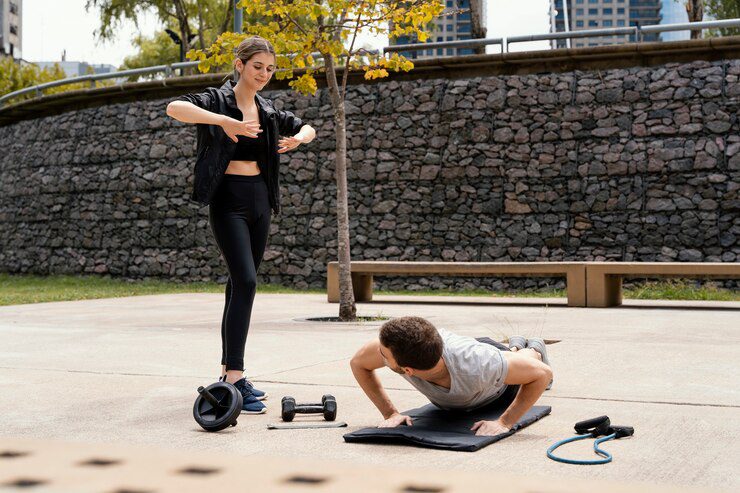Think fitness, and images of weights, cardio machines, and grueling sweat sessions might come to mind. But there’s a hidden gem in the fitness world, often overlooked yet crucial for long-term success: balance training and stability. These aren’t just buzzwords; they’re the keys to unlocking injury-free fitness and maximizing your performance potential.
Why Balance Matters:
Imagine this: you’re lunging for a new personal record, pushing your limits. Suddenly, your foot lands unevenly, and your ankle rolls. Sound familiar? Poor balance and stability are major risk factors for injuries, derailing your fitness journey and causing setbacks. But the good news is, that balance training is a proactive approach, building a strong foundation for a sustainable and thriving fitness life.
The Pillars of Balance and Stability:
Balance and stability are intertwined, but distinct. Balance is the ability to maintain your center of gravity over your base of support, while stability refers to the strength and coordination of your muscles to resist movement around your joints. Think of balance as your body’s gyroscope, and stability as the sturdy platform it spins on.
Unlocking the Benefits:
So, why should you care about these seemingly esoteric concepts? The benefits are numerous.
It reduces injury risk. Studies show that balance training significantly reduces the risk of ankle sprains, falls, and other musculoskeletal injuries, keeping you on the track (literally) to your fitness goals. The performance is improved. Better balance translates to more efficient movement, increased power, and better form in all your favorite activities, from running to weightlifting. It enhances core strengths. Balance exercises engage your core muscles, the powerhouse of your body, leading to better posture, stability, and overall fitness.
It boosts coordination. Balance training improves your neuromuscular communication, meaning your brain and muscles work together seamlessly, leading to smoother, more coordinated movements. It exhibits functional fitness for life. Everyday activities like walking, climbing stairs, and even carrying groceries require balance and stability. Training improves your ability to navigate these daily tasks with ease and confidence.
Building Your Balance Arsenal:
The beauty of balance training is its accessibility. You don’t need fancy equipment or expensive gym memberships. Here are some exercises you can do anywhere, anytime:
Single-leg stand: This seemingly simple exercise challenges your balance and core strength. Start with holding for 30 seconds per leg, gradually increasing the duration.
Heel-toe walk: Walk heel-to-toe in a straight line, forcing your body to micro-adjust for balance.
Bosu ball challenges: Use a Bosu ball (half-stability ball, half-platform) for squats, lunges, or planks, adding an extra layer of instability.
Yoga poses: Many yoga poses, like tree pose and warrior poses, focus on balance and stability, providing a mindful workout.
Tai chi: This ancient practice combines slow, controlled movements with deep breathing, improving balance, flexibility, and overall well-being.
Remember, consistency is key! Integrate balance training into your routine 2-3 times a week for optimal results.
Beyond the Exercises:
- While exercises are essential, remember that balance and stability exercises are holistic concepts. Here are some additional tips:
- Focus on proper form. Pay attention to your posture and alignment during your workouts. Good form ensures you’re engaging the right muscles and working on your balance effectively.
- Challenge yourself gradually. Don’t jump into advanced exercises. Start with simpler movements and gradually progress as you get stronger and more confident.
- Incorporate balanced challenges into daily life. Stand on one leg while brushing your teeth, or take the stairs two at a time. These small moments add up and improve your overall balance.
- Listen to your body. If you encounter pain or discomfort, halt the exercise and seek advice from a healthcare professional.
Conclusion
Balance training and stability aren’t just exercises; they’re investments in your long-term fitness journey. By prioritizing them, you unlock injury prevention, improved performance, and a healthier, more confident you. So, step off the autopilot, find your center, and embrace the power of balance to unlock your full fitness potential.







